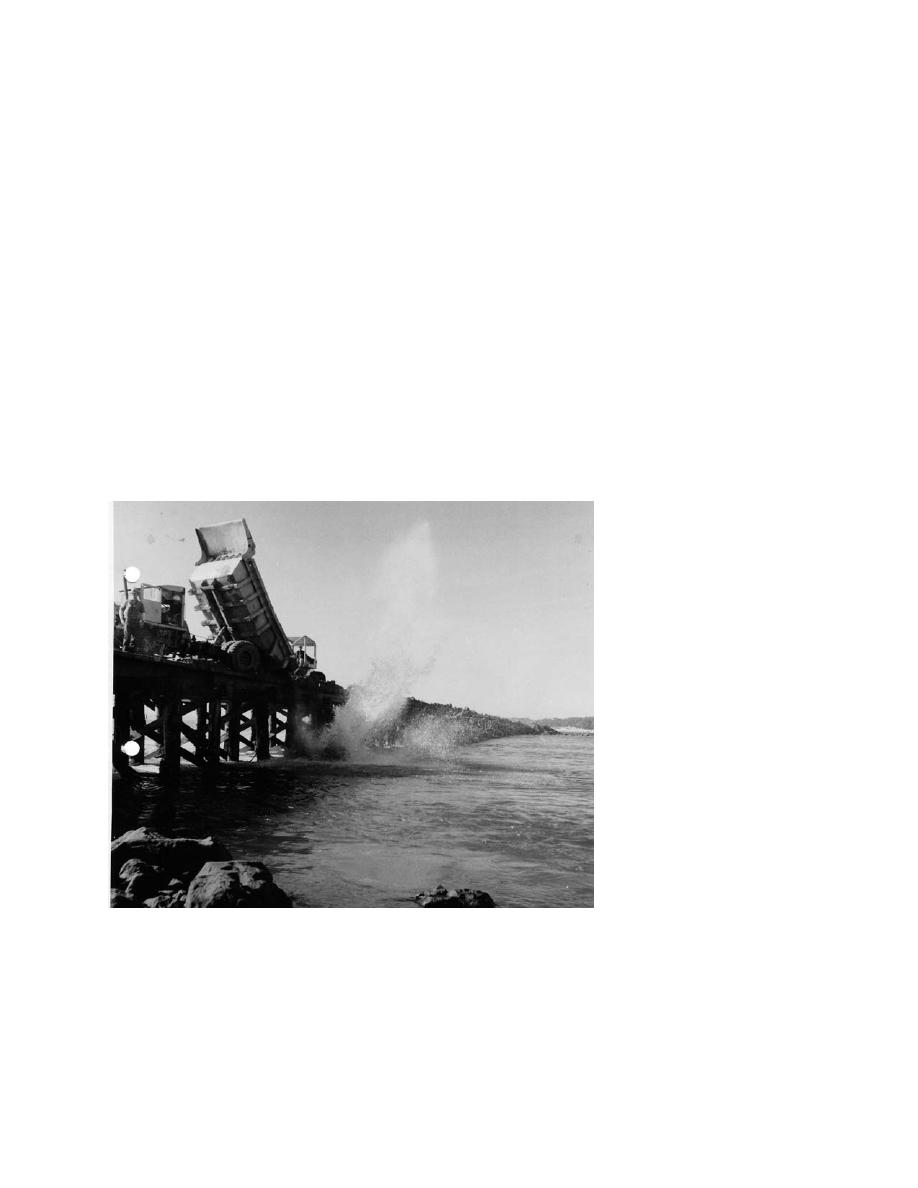
and engineers determined that a rock fill was required. A complete discussion of breach closure
construction is given by Henshaw (1956).
The project included both sand and rock fill and began in April of 1956. The work was
accomplished between April and November to avoid winter storms. The sand fill was
constructed from the north wing spit to the main body of the peninsula to reinforce the weakened
area directly adjacent to the beach. It had a top elevation of 20 ft mean lower low water (mllw)
and a minimum top width of 400 ft. The bayward slope was 1 on 10, and the seaward side was
graded to the dune elevation on the peninsula. The sand fill was planted with Holland beach
grass to prevent wind and rain erosion.
The rock fill was placed across the breach channel from the mainland to the north wing spit. The
first stone was placed in May of 1956. The rock fill was built with conventional end-dump
methods (Figure 4). A dozer made the final placement of the rock. It had a top elevation of 20 ft
mllw and a top width of 15 ft. The side slopes were 1 on 1-1/2. Eighty percent of the rock on
the seaward side of the fill weighed at least 5,000 lb, and none of the stone on the seaward side
weighed less than 3,000 lb. Toe blankets 6 ft wide and 50 ft wide were provided on both the
seaward and bayward sides of the fill.
Figure 4. Rock fill by conventional end-dump method (Henshaw 1956).
The first phase of the rock fill construction began on the mainland and proceeded across a tidal
flat to the south wing spit. An 800-ft long tidal channel was left, and the fill was started across
the main breach channel. To place the rock through the deepest section of the main breach
channel, a trestle with a deck 14 ft high and 20 ft wide was constructed (Figure 4). As the trestle
was constructed, stone was dumped on both sides forming a mound about 3.5 ft high along the
6


 Previous Page
Previous Page
